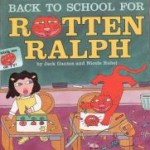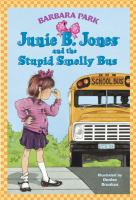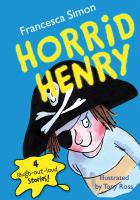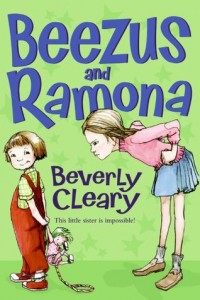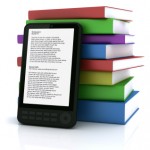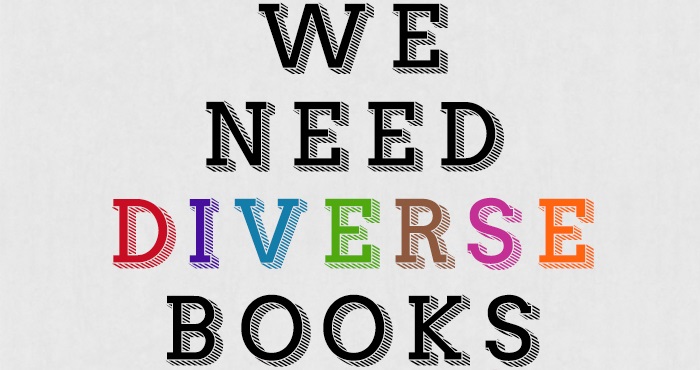By Leslie Grant, Graduate Assistant, McLure Education Library
Last month we talked about the appeal of series books and shared some picture book series books available at the library. We’d like to continue the discussion with more suggestions.
The introduction of slightly longer books helps readers transition away from picture books. Short, easy chapter books are a great tool for improving reading skills, serving as a stepping stone between picture books and novels. Here are a few series available at McLure we recommend:
Rotten Ralph by Jack Gantos
“Ralph, a very, very nasty cat, finally sees the error of his ways — or does he?”
Back to school for Rotten Ralph
Rotten Ralph helps out
Rotten Ralph’s rotten romance
Rotten Ralph feels rotten
Practice makes perfect for Rotten Ralph
Three strikes for Rotten Ralph
Best in show for Rotten Ralph
Magic Tree House by Mary Pope Osborne
“Eight-year-old Jack and his younger sister Annie find a magic treehouse, which whisks them back to an ancient time zone where they see live dinosaurs.”
Dinosaurs before dark
The knight at dawn
Mummies in the morning
Pirates past noon
Night of the Ninjas
Afternoon on the Amazon
Sunset of the sabertooth
Midnight on the moon
Dragon of the red dawn
Dark day in the deep sea
Eve of the Emperor penguin
A perfect time for pandas
Stallion by starlight
Hurry up, Houdini!
High time for heroes
The Time Warp Trio by Jon Scieszka
“Joe’s been caught up in a book before, but this is ridiculous! Joe’s Book, a gift from his magician uncle, doesn’t just tell stories, it zaps Joe and his friends Sam and Fred right into the middle of them.”
Knights of the kitchen table
The not-so-jolly-Roger
The good, the bad, and the goofy
Your mother was a Neanderthal
2095
Tut, tut
Summer reading is killing me!
It’s all Greek to me
See you later, gladiator
Sam Samurai
Hey kid, want to buy a bridge?
Viking it & liking it
Me oh Maya!
Da wild, da crazy, da Vinci
Oh say, I can’t see
Marco? Polo!
Junie B. Jones by Barbara Park
“Meet the World’s Funniest Kindergartner–Junie B. Jones! In the 1st Junie B. Jones book, it’s Junie B.’s first day and she doesn’t know anything. She’s so scared of the school bus and the meanies on it that when it’s time to go home, she doesn’t.”
Junie B. Jones and the stupid smelly bus
Junie B. Jones and her big fat mouth
Junie B. Jones and some sneaky peeky spying
Junie B. Jones and the yucky blucky fruitcake
Junie B. Jones and that meanie Jim’s birthday
Junie B. Jones loves handsome Warren
Junie B. Jones has a monster under her bed
Junie B. Jones is not a crook
Junie B. Jones is a party animal
Junie B. Jones is a beauty shop guy
Junie B. Jones smells something fishy
Junie B. Jones is (almost) a flower girl
Junie B. Jones and the mushy gushy valentime
Junie B. Jones has a peep in her pocket
Junie B. Jones is Captain Field Day
Junie B. Jones is a graduation girl
Junie B., first grader (at last!)
Junie B., first grader : boss of lunch
Junie B., first grader : toothless wonder
Junie B., first grader : cheater pants
Junie B., first grader : one-man band
Junie B., first grader : shipwrecked
Junie B., first grader : boo –and I mean it
Junie B., first grader : jingle bells, Batman smells! (P.S. so does May)
Junie B., first grader : aloha-ha-ha!
Junie B., first grader : dumb bunny
Horrid Henry by Francesca Simon
“Horrid Henry and his neighbor Moody Margaret decide to make the most sloppy, slimy, sludgy, sticky, smelly, gooey, gluey, gummy, greasy, gloppy glop possible. Is it the best glop in the world or the worst thing that’s ever happened to them? Plus three other stories so funny we can’t even mention them here.”
Horrid Henry
Horrid Henry tricks the Tooth Fairy
Horrid Henry and the mummy’s curse
Horrid Henry and the scary sitter
Horrid Henry and the mega-mean time machine
Horrid Henry and the soccer fiend
Horrid Henry and the abominable snowman
Horrid Henry wakes the dead
Horrid Henry rocks
Horrid Henry and the zombie vampire
Captain Underpants by Dav Pilkey
“When George and Harold hypnotize their principal into thinking that he is the superhero Captain Underpants, he leads them to the lair of the nefarious Dr. Diaper, where they must defeat his evil robot henchmen.”
The adventures of Captain Underpants : an epic novel
Captain Underpants and the attack of the talking toilets
Captain Underpants and the invasion of the incredibly naughty cafeteria ladies from outer space
Captain Underpants and the perilous plot of Professor Poopypants
Captain Underpants and the wrath of the wicked Wedgie Woman
Captain Underpants and the big, bad battle of the Bionic Booger Boy, part 1 : night of the nasty nostril nuggets
Captain Underpants and the big, bad battle of the Bionic Booger Boy, part 2 : the revenge of the ridiculous Robo-Boogers
Captain Underpants and the revolting revenge of the radioactive robo-boxers
Ramona Quimby by Beverly Cleary
“Beezus’ biggest problem was her 4-year-old sister Ramona. Even though Beezus knew sisters were supposed to love each other, with a sister like Ramona, it seemed impossible.”
Beezus and Ramona
Ramona the pest
Ramona the brave
Ramona and her father
Ramona and her mother
Ramona Quimby, age 8
Ramona forever
